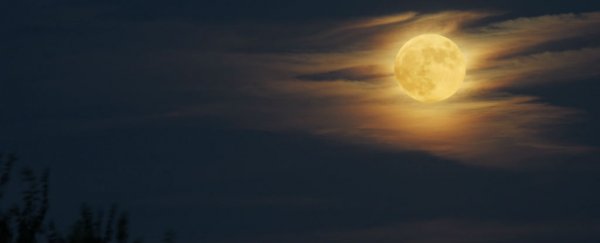The final eclipse of 2016 will occur this weekend, and it just so happens to coincide with the harvest moon - something we're not going to see again until 2024.
For the second year in a row, this month's full moon will coincide with a lunar eclipse, with those in Europe, Asia, Africa, and Australia are set to get the best view. The event is expected to last for about 3 hours as the Moon passes through Earth's outer - or 'penumbral' - shadow.
Earth has two types of shadows - penumbral and umbral. The umbra is the central cone of darkness that tapers away from Earth, and the penumbra is a much lighter shadow that spreads out from the edges of the umbra.
When Friday's full moon moves into this light shadow, it will cause a penumbral lunar eclipse - one of three types of lunar eclipse.
 newvision.co.ug
newvision.co.ug
Compared to the other two - partial and total lunar eclipse - the penumbral lunar eclipse is the most subtle, but with clear skies, you should be able to make out some faint shadows in the upper quarter of the Moon's disc without any special equipment.
Of course, if you have binoculars or a telescope, dig them out, because you'll get a way better view.
As Andrew Fazekas explains for National Geographic:
"Because the darkening will be so slight, the best bet for viewers will be to use binoculars or telescopes to catch the creep of Earth's shadow as it blankets the Moon's usual glare. Expect to see the darkening effect start over the northern portion of the Moon's limb and envelope about 91 percent of its disk during its maximum phase."
The eclipse is expected to begin on Friday 16 September at 4:54pm UTC (5:54pm BST, or 17 September 2:54am AEST), and will hit its peak at 6:54pm UTC (7:54pm BST, or 17 September 4:54am AEST).
The eclipse will last for exactly 3 hours, 59 minutes and 16 seconds, and you don't want to miss it - it's the last harvest moon eclipse of any kind that we'll see until 2024.
Now here comes the good - or bad - news, depending on where you live. The eclipse will be visible for everyone across Europe, Asia, Africa, and Australia. Those across North America and South America will have to wait until 2017 to see another eclipse:
 NASA
NASA
BUT for those in the non-viewing zone who still want a piece of the action - and those in the viewing zone who want to stay in bed - you can watch the whole event via Slooh Observatory's live online feed.
Their Harvest Moon Penumbral Lunar Eclipse livestream will launch on Friday, 16 September at 12:45pm ET (4:54pm UTC), so be sure to check that out to tide you over until 2017, when your lack of September eclipses will be more than made up for.
And hey, if you're just in the mood for seeing something cool, even if you won't be able to see the eclipse in North and South America, the harvest moon is a pretty incredible sight.
As National Geographic explains, this month's full moon is a designated harvest moon because it's the closest one to the autumn equinox in the Northern Hemisphere.
"Rising about half an hour later each night, the added light from the full moon's shine is said to have given farmers more time to harvest their crops," says Fazekas.
Happy sky-watching, everyone!
